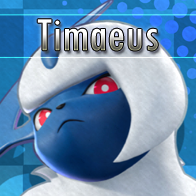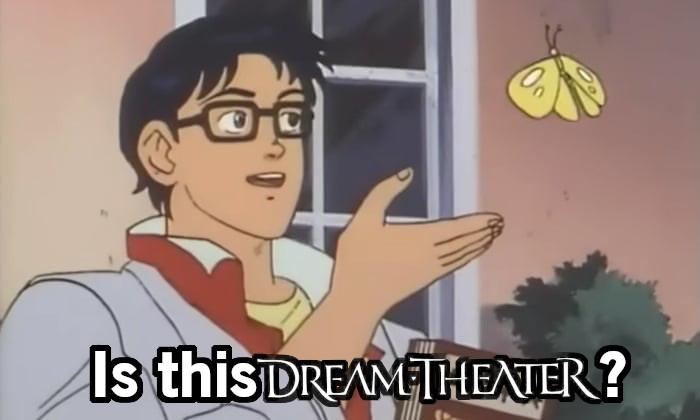Leaderboard
Popular Content
Showing content with the highest reputation since 11/25/2025 in all areas
-

OCR04970 - Streets of Rage & Etrian Odyssey II "At the Heart of Yggdrasil"
Dyluck and 3 others reacted to colorado weeks for a topic
4 points -

OCR04970 - Streets of Rage & Etrian Odyssey II "At the Heart of Yggdrasil"
paradiddlesjosh and one other reacted to Liontamer for a topic
What did you think? Post your opinion of this ReMix.2 points -

OCR04970 - Streets of Rage & Etrian Odyssey II "At the Heart of Yggdrasil"
Dyluck and one other reacted to paradiddlesjosh for a topic
Glad you caught that! Clutch is a Maryland/DC-based band but the inspiration track (“Son of Virginia”) has more southern rock influences from bands like Corrosion of Conformity. Can’t recommend either band highly enough!2 points -

*NO* Golden Sun: The Lost Age "Jupiter Descending"
gravitygauntlet reacted to Hemophiliac for a topic
Nailed the 80s John Carpenter vibe 100%. From the synths to the ambience, you hit it on the head with what you were going for. I enjoy the suspense and throwback feel. Even with the breakdown I struggle to make the connections to the source. It's very difficult to associate a chord progression with being memorable and associated to a particular source tune. I have a hard time saying that a progression is the thing that can link us back to it (unless the source is primarily just progression without other elements like melody or a strong rhythmic component). As the others have noted, this simply does not have enough source usage being dominant. 1:05 is when I really begin to understand the source usage with the ascending arp line. I do get the connection with the chords just after 0:30 but it's just not the memorable part of the source. I felt the production was good and clean, and it is really cool that tubas and low brass got to carry the melody for a while. What's here is very creative and engaging, but this came down to not enough dominant source usage, I would like to see a stronger connection to it. NO1 point -
Jazzy beat. Check. Excellent Rap Delivery and lyrics? Check. Beautiful Chorus/Singer tone. Also check. Yep this one gets a gold star.1 point
-

OCR04968 - Donkey Kong Country 2 "Blackthorne"
Hemophiliac reacted to Crulex for a topic
Oooooh, yes, give me all the noir jazz! This is perfect for a lounge style setting. Smooth and sexy, fantastic mix all around.1 point -
The final transition into the piano before the guitar was really nice. I actually got some later Kirby boss vibes from the piano and synth especially around 1:30, just from how the beats hit that "dun dun pause dun dun pause repeat" while the rest of the melody played. Damn good track and one of my favorites off of Feature Length.1 point
-

OCR04970 - Streets of Rage & Etrian Odyssey II "At the Heart of Yggdrasil"
paradiddlesjosh reacted to timaeus222 for a topic
I'm getting a sick southern vibe from this! Really good vocals as well!1 point -

8Track Noir
Hemophiliac reacted to derezr for an 8Track
I was a fan of Blackthorne ever since I heard it on DoD. I'm glad it was recently posted on OCR, and it's perfect for this 8Track!1 point -

An OverClocked Christmas v.XIX...
ArikXu_Hugo reacted to Argle for a topic
I'm baffled there are not tons of remixes from this game on the site, the songs are all so catchy.1 point -

*NO* Golden Sun: The Lost Age "Jupiter Descending"
gravitygauntlet reacted to jnWake for a topic
Spooky! This one begins with some creepy pads and sound design. There's some string melodies in the background but I'm not sure they're echoing the source. At 0:30 we get a lead of sorts and some movement on the bass before we get some chords on whistle-ish instruments. At 1:07 we get the source's main arpeggio line on many different instruments for a while, until at 1:44 things settle down. Soundscape is really cool, every instrument sounds great and I love all the effects on the background. At 2:19 we get a new section that's quite fun and at 2:44 we get the main arpeggios back alongside some original writing. This section gets a bit noisy with all that's going on, makes it hard to focus. At 3:22 we get a repeat of the main arpeggio/melody of the source. Melody is on a sitar-ish instrument that doesn't cut through the mix all that well. At 3:51 there's a break, then The Shining reference and the track ends. What a spooky/tense track! Production is very well done, the mix is mostly very clear (only a few spots with a bit too much going on) and the sample choices fit the idea perfectly. I particularly loved all the additional sound design efforts with all the SFX and transitions. At some points, especially towards the "climax", the production reminded me of the Zerg Themes from Starcraft, maybe it'd be interesting to try cover one of them on this style! Arrangement will be the main point of contention here. While the track's structure is good, with enough build-ups and breaks to keep an interesting pace, source usage is quite on the edge. As per your own write-up, source is clearly used from 1:05 to 2:18 and then from 2:40 to 3:50, for a total of 2 minutes and 23 seconds. Since the track lasts 4 minutes and 19 seconds this barely scrapes the 50% "unofficial rule" but I don't think the source is really dominant on all those sections. In particular, from 2:40 to 3:22 while you can definitely hear the main arpeggios I don't really think the source is the main focus so I can't completely count that part as dominant source usage. Overall, while this is a really cool arrangement with great production, I agree with proph that source usage isn't dominant enough for this to pass. I think making source usage clearer from 2:40 to 3:22 or adding some more direct quotes of the "melody" from the source in earlier parts of the track would help. NO1 point -

OCR04957 - Shovel Knight "We, Under the Stars"
jnWake reacted to Red Shadow for a topic
feels like a demoscene track, i dig it1 point -

*NO* Golden Sun: The Lost Age "Jupiter Descending"
gravitygauntlet reacted to prophetik music for a topic
what a weird original. opens with some interesting sound design. 0:30 does start to bring in some of the chord structure of the original, but it's pretty far afield from that. 1:05's ascending lines are more recognizable. the juxtaposition of the music box next to the synth leads is interesting. we get a beat around 1:43, and i like the space that the bass provides by not playing constantly here. the brass and sfx at 2:02 are surprisingly menacing when combined with the tempo change there. 2:19's original section is a bit of a break before we get back into a brass-heavy section. i don't really hear the A section in here, and the long swell on the brass instrument you're using becomes pretty obnoxiously clear. the 'b' section at 3:24 is a little clearer where it's coming from, and it functions as an outro. i think you've really nailed the vibe you were looking for here, for sure. there's a real dark, intense thriller-style feel to what's going on. i'd say though that i really don't get anywhere near enough source to my ears, which is my main concern. i hear what i'd attribute to source at 0:51-1:15, 1:22-2:18, and 3:22-3:51, which is 109/255 seconds (43%). maybe i'm missing something here? i separately found the track to over-use those brass samples that really got exposed at around the 3:00 mark. but i liked the overall direction of the piece, and like i said earlier i think the vibe's great. i just don't think it has near enough source as compared to all the other references. NO1 point

